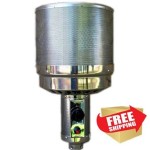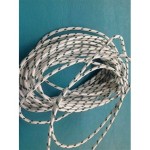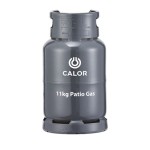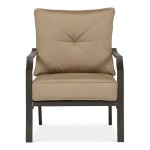Standard Patio Door Sizes: A Comprehensive Guide
Patio doors serve as a critical transition between indoor and outdoor living spaces, offering natural light, ventilation, and aesthetic appeal. When selecting and installing patio doors, understanding standard sizing is essential for a seamless and cost-effective project. This article provides a comprehensive overview of standard patio door sizes, exploring various types, typical dimensions, and factors to consider during the selection process.
The concept of standardization in building materials, including patio doors, aims to streamline manufacturing, installation, and replacement processes. While custom sizes are available, choosing a standard size often results in lower costs and faster lead times. Furthermore, standard sizes ensure compatibility with readily available hardware, screens, and accessories.
Understanding Common Types of Patio Doors
The term "patio door" encompasses several distinct types, each with its own standard size ranges and operational characteristics. Recognizing these differences is vital for accurate measurement and selection.
Sliding Patio Doors: Also known as gliding patio doors, these are the most common type. They consist of at least one fixed panel and one or more sliding panels that move horizontally along tracks. Sliding doors are space-saving, as they don't swing inward or outward.
French Patio Doors: French doors offer a classic, elegant aesthetic. They typically feature two hinged doors that swing inward or outward. French doors can be either inswing or outswing, depending on the available space and design preference. A variation of the French door is the French sliding door, which combines the look of a French door with the space-saving functionality of a sliding door.
Bifold Patio Doors: Bifold doors, also referred to as folding patio doors, consist of multiple panels that fold together like an accordion when opened. They create a wide, unobstructed opening, seamlessly connecting indoor and outdoor spaces. Bifold doors are ideal for larger openings and dramatic architectural designs.
Pocket Patio Doors: Pocket doors slide into a recess within the wall, disappearing completely when open. They maximize space and provide a clean, minimalist look. Pocket doors require specific wall construction to accommodate the recessed track and hardware.
Exploring Standard Patio Door Dimensions
While manufacturers may offer slight variations, the following dimensions represent typical standard sizes for each type of patio door. These measurements generally refer to the rough opening, which is the framed opening in the wall where the door will be installed.
Sliding Patio Doors:
Standard widths for sliding patio doors range from 5 feet to 8 feet (60 inches to 96 inches). Common widths include 5 feet (60 inches), 6 feet (72 inches), and 8 feet (96 inches). The standard height is typically 6 feet 8 inches (80 inches), which aligns with standard interior door heights.
Individual panel widths within a sliding door unit will vary depending on the overall door width and the number of panels. For instance, a 6-foot (72-inch) sliding door with two panels will typically have two 3-foot (36-inch) panels.
French Patio Doors:
Standard widths for French patio doors range from 5 feet to 6 feet (60 inches to 72 inches). Common widths include 5 feet (60 inches) and 6 feet (72 inches). The standard height is typically 6 feet 8 inches (80 inches), the same as sliding doors.
The width of each individual door panel in a French door set will depend on the overall door width. A 6-foot (72-inch) French door set will generally have two 3-foot (36-inch) doors.
Bifold Patio Doors:
Bifold patio doors are available in a wider range of widths than sliding or French doors, accommodating larger openings. Widths can range from 6 feet to 24 feet or more, depending on the number of panels. The standard height remains consistent at 6 feet 8 inches (80 inches).
Panel widths in bifold doors typically range from 2 feet to 4 feet (24 inches to 48 inches), depending on the overall door width and the desired number of panels. Bifold doors offer flexibility in configuration, allowing for varying panel widths and opening directions.
Pocket Patio Doors:
Pocket patio door sizes are similar to sliding patio doors, with standard widths ranging from 5 feet to 8 feet (60 inches to 96 inches) and a standard height of 6 feet 8 inches (80 inches). The key difference lies in the wall construction required to house the recessed track and hardware.
The panel widths for pocket doors depend on the overall door width and the number of panels. A 6-foot (72-inch) pocket door with two panels will typically have two 3-foot (36-inch) panels, similar to sliding doors.
It is crucial to note that these dimensions represent nominal sizes. The actual dimensions of the door unit may be slightly smaller to allow for proper installation and adjustment within the rough opening. Always consult the manufacturer's specifications for precise measurements.
Key Considerations When Choosing Patio Door Sizes
Selecting the appropriate patio door size involves more than simply matching existing dimensions. Several factors should be carefully considered to ensure a functional, aesthetically pleasing, and energy-efficient installation.
Rough Opening Measurement: The rough opening is the framed opening in the wall where the door will be installed. Accurate measurement of the rough opening is paramount. Measure the width and height of the opening in several places to identify any inconsistencies or variations. Ensure the opening is square and plumb. A level and square opening is crucial for proper door operation and weather sealing.
Clearance and Swing Space: Consider the available clearance space around the patio door. Inswing French doors require sufficient space to swing inward without obstruction. Outswing French doors require space on the exterior. Sliding and pocket doors do not require swing space, making them suitable for areas with limited room. Bifold doors require space for the panels to fold and stack when open.
Energy Efficiency Requirements: Patio doors, especially large ones, can significantly impact energy efficiency. Consider the door's U-factor (insulation value) and Solar Heat Gain Coefficient (SHGC) ratings. Choose doors with low U-factors and SHGC ratings to minimize heat transfer and reduce energy consumption. Features such as low-E glass, insulated frames, and tight weather stripping can enhance energy performance. The orientation of the door should also be considered. South and west-facing doors will receive the most direct sunlight, impacting cooling costs in warmer climates. Proper sizing and energy-efficient features can help mitigate these effects.
Aesthetic and Architectural Style: The patio door should complement the overall aesthetic and architectural style of the home. French doors often suit traditional or formal designs, while sliding doors may be more appropriate for contemporary or minimalist settings. Bifold doors can create a dramatic, modern look. Consider the door's frame material, color, and hardware to ensure it aligns with the existing décor and architectural elements.
Local Building Codes and Regulations: Ensure that the chosen patio door size complies with local building codes and regulations. Codes may specify minimum door sizes for egress requirements, energy efficiency standards, and safety features such as tempered glass. Obtain necessary permits and consult with a qualified building inspector to ensure compliance.
Accessibility Considerations: When selecting a patio door, consider accessibility requirements for individuals with mobility limitations. Wider door openings and low thresholds can improve accessibility for wheelchair users and those with limited mobility. Comply with Americans with Disabilities Act (ADA) guidelines for accessible door dimensions and features.
Material Selection: Patio doors are available in various materials, each with its own advantages and disadvantages. Common materials include vinyl, wood, aluminum, and fiberglass. Vinyl offers excellent energy efficiency and low maintenance. Wood provides a classic, elegant look but requires regular maintenance. Aluminum is durable and weather-resistant but can be less energy-efficient. Fiberglass combines durability, energy efficiency, and low maintenance. Choose a material that suits the climate, budget, and aesthetic preferences.
Professional Installation: Proper installation is essential for optimal performance and longevity of the patio door. Hire a qualified and experienced contractor to install the door according to the manufacturer's specifications. Professional installation ensures proper sealing, alignment, and operation. Incorrect installation can lead to air and water leaks, reduced energy efficiency, and premature door failure.
Custom Sizing Options: While standard sizes offer cost and convenience benefits, custom sizes may be necessary for unique architectural designs or non-standard openings. Custom patio doors can be fabricated to specific dimensions, allowing for greater design flexibility. However, custom doors typically incur higher costs and longer lead times. Weigh the benefits of custom sizing against the added expense and time investment.
By carefully considering these factors, homeowners and contractors can select the appropriate patio door size to enhance the functionality, aesthetics, and energy efficiency of their homes.

What Is Standard Sliding Glass Door Sizes Width Dimensions And Measurements

Jeld Wen 96 In X 80 V 2500 White Vinyl Left Hand Full Lite Sliding Patio Door 8f0480 The Home Depot

What Are Standard Pvc Patio Door Sizes Turkington Windows

Patio Door Sliding Glass Doors

Patio Door Sizes

What Is Standard Sliding Glass Door Sizes Width Dimensions And Measurements

Jeld Wen 72 In X 80 V 2500 Desert Sand Vinyl Left Hand 10 Lite Sliding Patio Door Thdjw181500193 The Home Depot

Sliding Door Dimensions Glass Doors Patio

Aluminium Sliding Doors S Sd1821 Patio Door Sizes Sigmadoors

How Wide Are Sliding Glass Doors Standard Door Sizes








